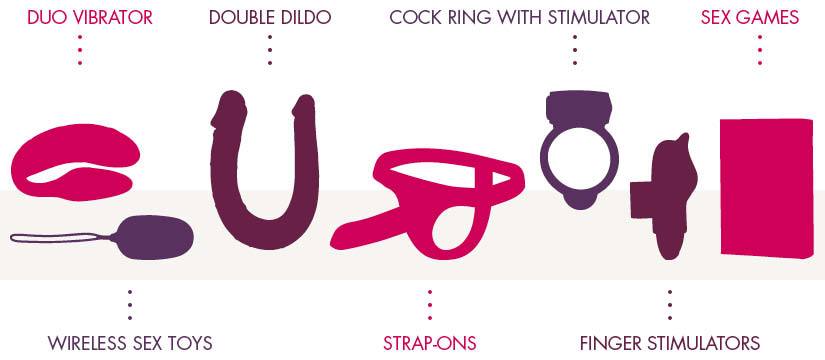The beef sex scene is brief, messy, and unforgettable. It is less about bodies and more about the weight people carry when anger, shame, and longing collide. The scene doesn’t try to be glamorous. It tries to be true. And it works because the series has already shown us two people spiraling, grasping for any lever that might change the way they feel—about themselves, about each other, about the wreckage in their lives. This guide takes a close, non-graphic look at how the show sets it up, what happens under the surface, why viewers can’t stop talking about it, and what we can learn about intimacy, power, and the stories we tell ourselves.
What the scene actually is (without spoilers or graphic detail)
The beef sex scene is not a slow-burn fantasy. It is a hard pivot. The mood is jagged, the timing is wrong, and the characters are not “ready” in any healthy sense. That’s the point. It shows how desire can slip in through cracks—resentment, loneliness, self-hate—then flare fast, like a match. The camera keeps some distance. It lets the awkwardness breathe. It does not celebrate the moment. It witnesses it.
This choice changes how we read the characters. It shows the odd overlap where revenge, attraction, and confusion blur. No violins. No candlelight. Just heat, guilt, and the human habit of touching the stove even after we know it burns.
How the show earns the moment
Great shows don’t drop a sex scene like a prop. They build pressure first. The road rage that kicks off the story is not a cute meet. It is a wound. From there, stress multiplies. Money pressure. Career pressure. Family pressure. The show stacks little humiliations—missed chances, wrong words, bad luck—and lets us watch what pressure does when it can’t find a safe outlet.
By the time the scene arrives, the characters are primed for bad choices that feel good for five minutes and bad for five months. The staging honors that math. Small room. Short breaths. Zero romance. It shows what happens when people chase relief instead of repair.
Desire as misdirection
One reason the beef sex scene hits is that it exposes a trick the brain plays. When you’re angry, anxious, or ashamed, desire can feel like a shortcut to relief. It’s quick. It’s intense. It’s an easy story to tell yourself: “If I do this, I’ll feel different.” And you do—briefly. But the scene shows a harder truth: lust cannot carry the weight of everything else. It can spark a new problem while the old one smolders.
The show refuses the myth that sex fixes character arcs. It shows that sex can complicate them, especially when it grows from pain rather than care.
Power, control, and who is steering
Every intimacy scene asks a quiet question: who is steering? In this one, power is slippery. Both characters are trying to take control of something—anything—because life keeps taking control away. The act becomes a way to win a private game no one else can see: “I can do this. I can get what I want.” But when two private games run at once, neither partner is really present. The body says yes. The story underneath says, “I refuse to feel weak.” The result is contact without safety.
That tension explains the scene’s aftertaste. It’s not sweet. It’s strong. The show wants you to feel the bill come due.
The camera’s role: framing without glamor
Cinematography matters. The lens here stays honest. Angles are close enough to feel breath but far enough to register the room’s air—awkward, thin, unstable. The cuts are brisk. The light is not soft. Colors lean toward the real, not the romantic. We’re not invited to linger. We’re asked to notice. You notice clumsy timing, rushed choices, micro-flinches on faces. You notice what is not said.
That restraint turns the scene into a character study. You read posture more than skin. You read pauses more than motion. It’s drama, not spectacle.
What the scene says about loneliness
Loneliness loves a closed door. The show understands this. The scene is a snapshot of two different solitudes trying to touch. Not love. Not even lust in the warm sense. It’s a bid for relief. A bid for proof: “I am still here. I can still feel.” The quiet tragedy is that loneliness can survive contact if the contact doesn’t carry care. The show lets us see that survival on both faces.
And yet, there is compassion in the framing. These are not villains. They are people trying something reckless because they think it might work.
Anger, shame, and intimacy: the triangle that drives the series
Anger energizes. Shame silences. Intimacy—good intimacy—requires both people to be seen. The beef sex scene throws all three into one small space. Anger supplies the spark. Shame arrives a beat later. Intimacy never gets a real seat at the table. That’s why the scene feels hot and hollow. It has fire, not warmth. The show wants you to notice the difference.
Later echoes in the plot make this even clearer. The moment doesn’t heal anything. It reframes stakes. Now there’s another secret to keep, another boundary crossed. This is how dramas snowball: one choice, then another to cover the first, then another to manage the cover.
Performance notes: why the acting matters
Actors sell subtext with micro-moves: a flit of the eyes, a hand that hesitates, a breath that doesn’t land. The performers here layer contradictions—want and worry, pull and push—so that the scene doesn’t read as a win. It reads as a lurch. That’s hard to do without words. It’s even harder in a moment TV often flattens into a glossy montage.
Because the acting refuses gloss, the moment lingers. Viewers argue about it because it’s not tidy. It breaks ships and creates new ones. It feels lived-in and wrong at once.
Consent and clarity (and why the show’s tone matters)
The series doesn’t blur consent. It blurs wisdom. The difference is important. You can make a consensual choice that is personally unwise. You can say yes while your inner voice says, “This won’t help.” The show’s tone respects that complexity. It doesn’t wag a finger. It doesn’t high-five. It holds a mirror and asks, “Do you see what you’re doing?”
For viewers, that mirror can feel close. Many of us have made a fast choice to mute a loud feeling. The scene reminds us what the bill looks like.
Gender, culture, and the mask of success
“Beef” talks about money, status, and image as much as it talks about rage. Success stories often demand masks—the good parent, the perfect partner, the bulletproof founder. The beef sex scene cracks those masks. In a private space, people drop into raw habits: chase validation, chase sensation, chase a win. This is not about gender stereotypes so much as shared pressure. The show says: chasing wins can make you lose yourself.
That’s why the moment reads as cultural, not just personal. It taps a larger anxiety: “If I have it all, why do I feel so empty?”
The ethics of audience desire
Let’s name something awkward. Part of the audience wants the scene. Not for titillation, but for closure-by-contact. Drama trains us to read chemistry as destiny: if two people have spark, they must collide. The show resists this training. It delivers the collision but denies the fantasy. The cost is visible. The relief is thin. The echo is loud.
In doing so, the series calls the audience in: what do you really want from these characters—redemption, ruin, romance, or realism?
How the scene changes the stakes
After the beef sex scene, the story carries new gravity. Trust is harder. Lies are easier. Stakes are stickier. That’s what complicated intimacy does in a plot. It turns every later choice into a test: tell or hide, own or dodge, repair or repeat. The show uses the moment as a hinge. It doesn’t stand alone. It swings the door to the next room.
This is smart structure. It raises tension without a car crash or a gun. It uses human mess to power the machine.
Directing choices: pace, sound, and silence
Pace is fast. Not rushed—tight. The cut tempo suggests urgency, not joy. Sound design is light on score and heavy on room tone—fabric, breath, the tiny noises that remind you bodies are fragile and present. Silence does half the work. You hear what characters cannot say. That silence is the show’s thesis: the loudest feelings are often the ones with no words yet.
Because sound stays spare, you lean on faces. You watch shock turn to focus, to confusion, to small, quiet dread. It’s a craft choice that trusts the viewer.
What viewers can take from it (beyond the plot)
A scene like this can be a mirror for life off-screen:
- Relief is not repair. Ask if the thing you’re about to do fixes the problem or only mutes it.
- Timing matters. Good choices at bad times become bad outcomes.
- Secrets cost energy. If a moment requires three new lies, it may not be worth the glow.
- Care is the test. If you can’t name one caring act inside the heat, pause. Heat without care burns.
These are simple, human rules. The show does not preach them. It demonstrates them.
Non-graphic intimacy that still lands
For couples who watch and feel stirred—not to copy the mess, but to connect more honestly—there are gentle ways to build closeness that don’t ride on chaos. Hold eye contact for a single song. Breathe together for one minute, forehead to forehead. Trade one specific compliment each. Choose a position with short movements and steady breath. Add lube, dim light, soft music, and a clear “we can pause” rule. Intimacy that starts with care often ends with warmth rather than fallout.
If you ever need a health-first refresher on timing intimate activity after common treatments, here’s a practical, plain-English guide you can keep on hand: how long to wait for sex after yeast infection treatment. Use it when real life, not TV drama, sets the stakes.
The scene’s legacy inside the series
Some scenes become fandom furniture. This is one of them. Not because it is flashy, but because it is honest. It forces the plot to grow new branches. It complicates how we judge everyone involved. When fans revisit the series, they read earlier episodes through this lens. Little looks make new sense. Tossed jokes cut deeper. The road rage kickoff was never only about traffic; it was about people who were already frayed. The scene confirms that fray.
In the long run, that’s what storytelling tries to do: reveal the seam that runs under the fabric, the one we feel but seldom see.
A viewer’s toolkit for watching hard intimacy scenes
- Name the feeling. Are you feeling thrill, dread, pity, recognition? Saying it out loud lowers the charge.
- Separate consent from wisdom. A consensual scene can still be a bad idea.
- Check the cost. Ask what this moment adds to plot and subtracts from the characters’ safety.
- Look for care. If care is missing, the scene is probably about pain, not love.
- Hold both truths. You can find a scene compelling and still think the characters made a mistake.
This toolkit helps you talk with friends after the episode with more nuance and less noise.
How writers make scenes like this feel real
On the page, a scene like this is built from beats:
- Trigger beat: the push that makes the moment possible (stress, fight, confession).
- Permission beat: a line or look that lowers a guard.
- Action beat: the choice, fast and clear.
- Break beat: the breath after, where truth leaks in.
- Price beat: the seed of future consequence.
Good directing keeps actors on those rails without feeling mechanical. When it lands, the scene feels inevitable and regrettable at once.
The cultural conversation it opens
Viewers ask: Is rage attractive? Is chaos sexy? The show says: they are loud, not deep. Loud can mimic depth for a minute. The beef sex scene sneaks up to that line, lets you feel the volume, and then drops you back in silence. After the credits, you can hear your own thoughts again. Maybe that’s the most generous thing art can do—return you to yourself with a better question than the one you started with.
If the scene triggers, here’s a gentler way to engage
Not every viewer wants proximity to chaotic intimacy, and that’s okay. You can step out, take a breath, and rejoin later. You can read episode summaries instead of watching. You can talk about themes without replaying pictures in your head. Boundaries make fandom kinder.
Frequently Asked Questions (FAQ)
Is the beef sex scene meant to be romantic?
No. It’s meant to be revealing. The tone is honest and tense, not dreamy. The show uses the moment to expose stress fractures in both characters, not to grant them a fairy-tale turn.
Does the scene glamorize bad choices?
It resists glamor. The framing stays non-graphic, the mood is awkward, and the aftermath carries weight. The story shows cost, not conquest.
Why do people keep talking about it if it’s not explicit?
Because it’s emotionally loaded. The scene fuses anger, need, and shame in a way that feels real. It invites debate about motive and consequence more than it invites ogling.
Is consent clear?
Yes, but clarity of consent doesn’t equal wisdom of choice. The scene reads as consensual, unwise, and high-risk for fallout.
What does the moment change in the plot?
Everything that follows has a new layer of tension: more secrets, more potential for mistrust, and more pressure on future decisions.
Is the scene necessary?
For this story’s thesis—rage as a solvent that dissolves facades—it is. The moment shows how people use sex to mute deeper pain, and how that never works for long.
How does the camera keep it from feeling voyeuristic?
By staying focused on faces, breath, and pauses. It avoids glam framing and quick gratification shots, leaning on performance rather than spectacle.
What should viewers watch for on a rewatch?
Micro-expressions before and after. Shifts in posture. Who speaks first. Who breaks eye contact. Those small beats reframe earlier scenes.
Can a scene like this help real couples?
Indirectly. It can spark a talk about pressure, coping, and the difference between relief and repair. If it prompts clearer boundaries and kinder pacing, that’s a win.
How do I talk about the scene without spoiling it?
Name the theme, not the details: “There’s a moment where anger and longing collide, and it shows how relief isn’t repair.” That respects new viewers.
Is it normal to feel both compelled and uncomfortable watching it?
Yes. That mixed feeling is part of the design. The show wants your brain to argue with your gut and then ask better questions.
What’s one takeaway I can use off-screen?
When you feel the pull to fix a big feeling with a fast act, pause. Breathe. Ask what would actually repair the problem—apology, rest, care, time—not just mute it.
Final words
The beef sex scene works because it refuses easy answers. It is short, raw, and heavy with consequence. It begins with anger and ends with silence, and in that silence you hear the truth: relief without repair is a loan with high interest. The show trusts you to feel that, to argue with it, and maybe to carry a slower wisdom back into your own life—where heat is sweet, yes, but care is what lasts.



![Most Powerful Bullet & Mini Vibrators [Tested in 2025]](https://couplepleasure.com/wp-content/uploads/2025/10/image-11-2.jpeg)
